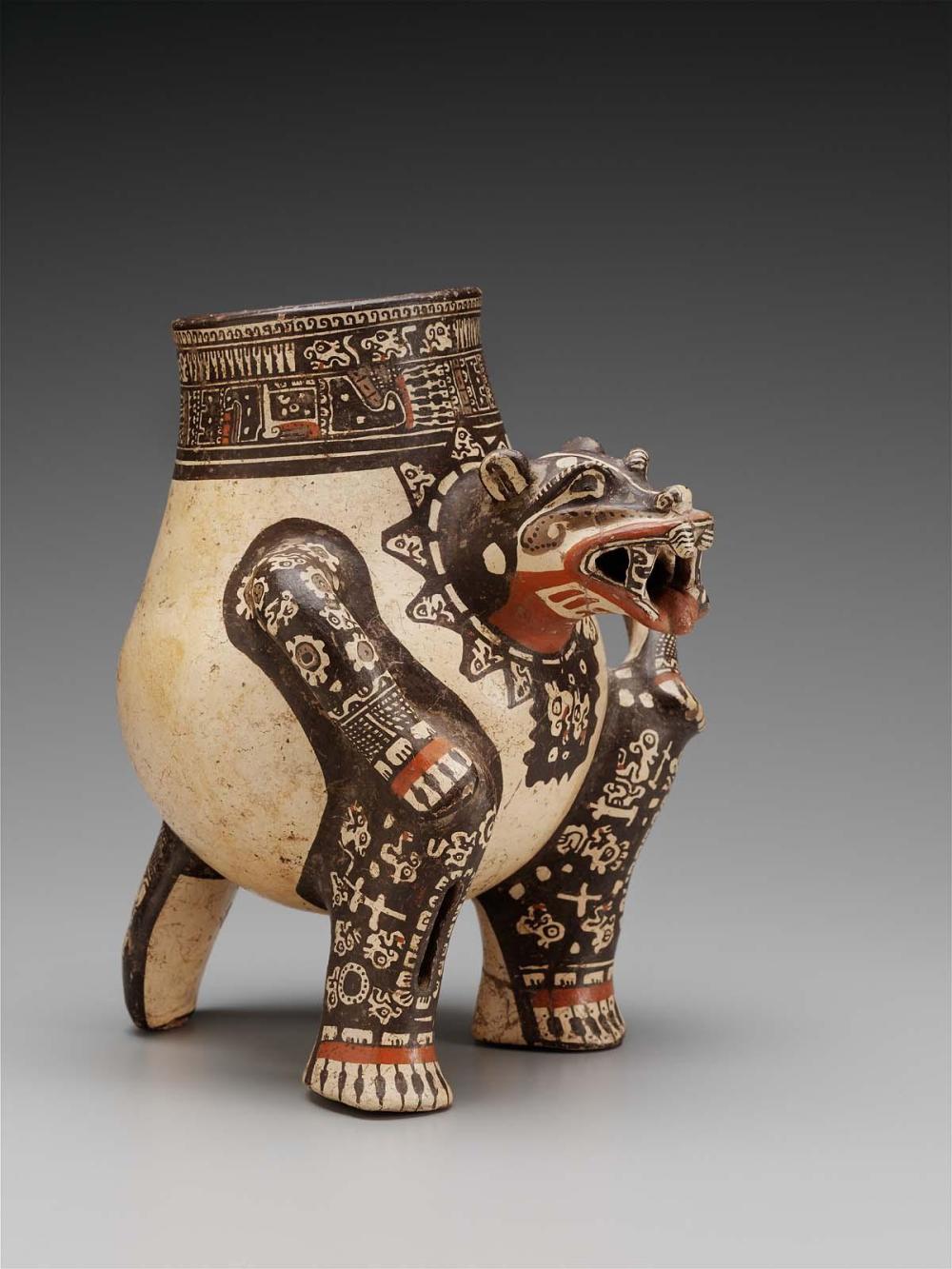Advanced Search 

Jaguar effigy vessel
Guanacaste-Nicoya culture
Period VI
1200–1400 AD
Object Place: Nicaragua, Rivas region
Medium/Technique
Earthenware with red and black on white slip paint
Dimensions
Overall: 29.2 x 21.1 x 24.1 cm (11 1/2 x 8 5/16 x 9 1/2 in.)
Credit Line
Museum purchase with funds donated by Leigh B. and Steve Braude
Accession Number2005.9
CollectionsAmericas
ClassificationsCeramics
DescriptionPear-shaped pottery vessel portraying a shaman transformed into his/her jaguar alter ego.The fierce spirit erupts from the jar, jutting its feline head out through a dark rayed circle, with gaping mouth and teeth bared ready to attack. Small pellets inside the hollow front legs produce a rattling sound when the vessel is moved, recalling the low grumble of the jaguar as it stalks its prey. The shaman's human form is conveyed by the jaguar's vertical attack pose which mimics that of his/her conventional position seated on a low stool and with hands resting on the knees. The sensation of loss-of-body, typical of the shaman's visionary experience, is evoked by the black-painted limbs and head seemingly disembodied by the stark white background on which the limbs float in a featureless void. Tiny profile jaguars adorn the black-painted limbs in contrast to the human forms surrounding the opening through which the jaguar thrusts its head. These tiny figures echo the jar's theme of the human shaman residing within the visionary jaguar.
ProvenanceBy 1971, Paul A. Clifford and William C. Thibadeau, Atlanta [see note]; 1972, sold by Clifford and Thibadeau to the High Museum (later the High Museum of Art), Atlanta (accession no. 72.56); August 24, 1998, deaccessioned for sale through Sotheby's; June 2, 1999, sale (consigned by the High Museum of Art), Sotheby's, New York, lot 49, to a private collection; 2005, sold by this private collection, through Sotheby's, New York, to the MFA. (Accession Date: February 23, 2005)
NOTE: Featured on the cover of Pre-Columbian Art from the Collections of Paul A. Clifford and William C. Thibadeau (High Museum, Atlanta, February 13 - April 4, 1971).
NOTE: Featured on the cover of Pre-Columbian Art from the Collections of Paul A. Clifford and William C. Thibadeau (High Museum, Atlanta, February 13 - April 4, 1971).
